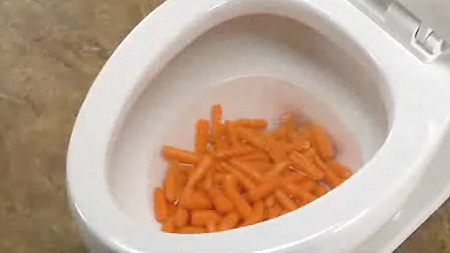Is it Possible to Dispose of Food in the Toilet?
Is it Possible to Dispose of Food in the Toilet?
Blog Article
We've come across the article on What Can Happen If You Flush Food Down the Toilet? listed below on the net and reckoned it made good sense to quickly share it with you over here.

Introduction
Many individuals are often faced with the predicament of what to do with food waste, especially when it involves leftovers or scraps. One common inquiry that arises is whether it's fine to purge food down the toilet. In this post, we'll look into the reasons why people might think about purging food, the effects of doing so, and different approaches for proper disposal.
Reasons that individuals could consider purging food
Absence of awareness
Some individuals might not know the potential harm triggered by flushing food down the toilet. They may erroneously think that it's a harmless practice.
Ease
Purging food down the bathroom may feel like a fast and simple solution to throwing away unwanted scraps, specifically when there's no close-by trash bin readily available.
Laziness
In many cases, people might simply select to flush food out of large laziness, without taking into consideration the consequences of their activities.
Consequences of flushing food down the bathroom
Environmental effect
Food waste that winds up in waterways can contribute to air pollution and injury aquatic ecological communities. Additionally, the water used to purge food can stress water sources.
Pipes issues
Purging food can lead to clogged pipes and drains, causing costly plumbing repair work and troubles.
Kinds of food that must not be flushed
Fibrous foods
Foods with fibrous textures such as celery or corn husks can obtain tangled in pipes and create obstructions.
Starchy foods
Starchy foods like pasta and rice can soak up water and swell, leading to blockages in pipes.
Oils and fats
Greasy foods like bacon or food preparation oils should never be purged down the bathroom as they can solidify and cause blockages.
Correct disposal approaches for food waste
Making use of a garbage disposal
For homes equipped with garbage disposals, food scraps can be ground up and flushed with the pipes system. Nevertheless, not all foods are suitable for disposal in this fashion.
Recycling
Certain food packaging products can be reused, lowering waste and reducing ecological impact.
Composting
Composting is a green means to deal with food waste. Organic materials can be composted and utilized to enhance dirt for gardening.
The value of correct waste management
Reducing environmental injury
Correct waste administration techniques, such as composting and recycling, aid minimize pollution and protect natural deposits for future generations.
Safeguarding pipes systems
By avoiding the technique of flushing food down the commode, home owners can prevent expensive pipes repair services and preserve the stability of their plumbing systems.
Verdict
In conclusion, while it may be tempting to purge food down the toilet for benefit, it is very important to recognize the possible effects of this action. By embracing proper waste administration methods and disposing of food waste sensibly, individuals can contribute to much healthier plumbing systems and a cleaner atmosphere for all.
FLUSH FOOD DOWN THE TOILET?
FLUSHING FOOD CAN CAUSE BLOCKED DRAINS IN YOUR HOME
All of the plumbing fixtures in your home are connected to the same sewer pipe outside of your home. This outdoor sewer pipe is responsible for transporting all the wastewater from your home to the Council sewer mains. Even small pieces of food that go down the kitchen sink can cause problems for your sewer. It should therefore be obvious that flushing larger bits of food, such as meat, risks a clog in either the toilet itself or the sewer pipes. Flushing greasy food is even more problematic because oil coagulates when it cools, coating the interior lining of your pipes.
THE TOILET IS NOT A BIN
Food isn’t the only thing that people shouldn’t be flushing down the toilet. People use the toilet to dispose of all kinds of things such as tampons, makeup wipes, dental floss, kitty litter and even underwear. Water goes to great lengths to educate residents about the high costs and stress placed on wastewater treatment systems simply from people flushing the wrong stuff down the toilet. It costs taxpayers millions of dollars each year, and homeowners thousands in blocked drain repairs.
FLUSHING FOOD IS A WASTE OF WATER
Flushing food is a waste of our most precious resource - water. In June this year Level 1 water restrictions were introduced to protect water supply from drought conditions. Much of New South Wales continues to be affected by prolonged drought with recent figures revealing up to 97 per cent of the state remains in drought. Depending on whether you have a single or dual flush toilet, every single flush uses between five and 11 litres of water. In the current climate this is a huge amount of water to be wasting on flushing food that should be placed in the bin (or better yet, the compost).
https://www.jabplumbingsolutions.com.au/blog/can-you-flush-food-down-the-toilet

As a passionate person who reads on Flushing Food Down the Toilet?, I was thinking sharing that topic was really useful. If you enjoyed our blog post kindly remember to share it. Thanks for going through it.
Call Today Report this page